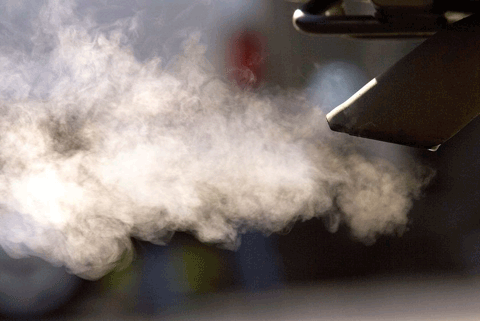Key words :
climate change,
greenhouse gas emissions
,climate policies
,climate-change
,decision analysis
,extreme climate
,global emissions
,mit climate study
,risk assessement
New MIT Study: Smaller Cuts, If Taken Now, Can Minimize Climate Risk
9 Oct, 2009 09:24 am
Even "moderate" cuts in greenhouse gas emissions may be sufficient to avoid the most catastrophic consequences of climate change, says new MIT study. But only if those moderate cuts start now, not in 2020, where many emissions targets take initial aim. Without swift action, even more aggressive cuts may not be enough to stop extreme climate disruption.
 |
"Our results show we still have a around a 50-50 chance of stabilizing climate" to within a few tenths above the 2 degree threshold, said Ron Prinn, a co-author of the study and co-director of MIT's Joint Program on the Science and Policy of Global Change
Using a computer model combining both climate change and economic growth models, researchers examined four different scenarios fixing global emissions at varying levels through the end of the 21st century. Scientists ran the models hundreds of times, with each run feeding varying environmental and economic data to come up with a comprehensive risk assessment. Such risk analysis helps to focus policy away from the two political extremes of doomsday tomorrow vs. pure, evil hoax.
The political debate is often framed by two extremes," said Co-author Mort Webster, an MIT professor who studies risk and decision analysis. "One extreme says, 'The situation's so bad, you have to do everything.' There's no sense of trade-offs. The other side says, 'It's all a myth, we shouldn't do anything.' Neither of those is particularly helpful.""The nature of the problem is one of minimizing risk," says Webster. He hopes that by focusing on risk management, considering a range of probabilities of various outcomes instead of focusing on the average outcome of a particular climate model, policymakers can make more informed decisions. Webster says that scientists and political leaders often rely too much on the widely held notion that staying under 2 degrees C means stabilizing atmospheric carbon concentrations at 450 parts per million (ppm). Webster says the new research shows that it faulty thinking.
What we're saying is, if you think you want to stay below 2 degrees, don't think 450 [ppm] will get you there for sure," he said. "The bottom line of this report is this notion of trade-offs, of managing risks as a way to think about these long-term global climate targets."The strictest emissions scenario in the model limited carbon concentrations at 480 ppm by 2100, resulting in a 1.7 degree C rise in average temperatures. In that scenario, the risk of a greater rise to 3.2 degrees C is only about 5 percent.
It's a tradeoff between risks. There's the risk of extreme climate change but there's also a risk of higher costs. As scientists, we don't choose what's the right level of risk for society, but we show what the risks are either way."
This new research builds on work published in the Journal of Climate, published earlier this year, that projects a 5.2 degree C rise in average temperatures by 2100 if nothing is done to reduce greenhouse gas emissions.
Originally published on Global Warming is Real







 Read more
Read more